Click on images to enlarge

infestation (Photo: Chris Gardiner)

infestation (Photo: Forest and Kim Starr, USGS)

habit (Photo: Chris Gardiner)

rooting from creeping stems (Photo: Chris Gardiner)

leaves and flowers (Photo: Sheldon Navie)
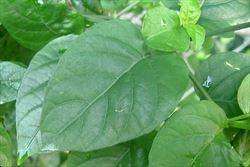
close-up of leaves (Photo: Sheldon Navie)

close-up of flowers (Photo: Sheldon Navie)

immature fruit (Photo: Sheldon Navie)

mature fruit (Photo: Sheldon Navie)

close-up of seeds (Photo: Steve Hurst at USDA PLANTS Database)
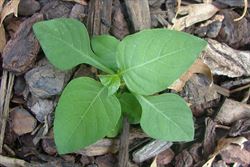
seedling (Photo: Sheldon Navie)
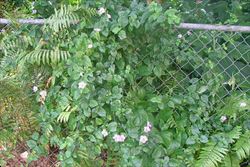
habit growing on a fence (Photo: Sheldon Navie)
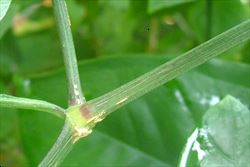
close-up of stems (Photo: Sheldon Navie)
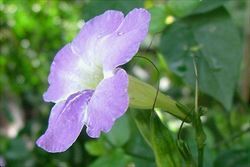
close-up of flower from side-on (Photo: Sheldon Navie)
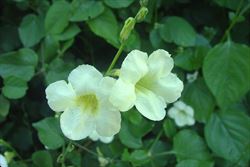
the whitish flowered form, which is sometimes known as Asystasia gangetica 'Alba' (Photo: Sheldon Navie)
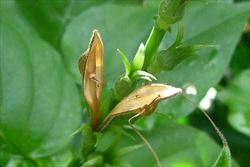
close-up of old fruit that has already released its seeds (Photo: Sheldon Navie)

leaves and flowers of Asystasia gangetica subsp. micrantha (Photo: Forest and Kim Starr, USGS)
Scientific Name
Asystasia gangetica (L.) T. Anderson subsp. gangetica
Synonyms
Asystasia coromandeliana NeesAsystasia gangetica (L.) T. AndersonJusticia gangetica L.
Family
Acanthaceae
Common Names
Chinese violet, coromandel, creeping foxglove, Ganges primrose, Philippine violet
Origin
Native to the Indian Sub-continent (i.e. India and Sri Lanka).
Naturalised Distribution
Naturalised in the coastal districts of northern Australia (i.e. in northern and central Queensland and the northern parts of Western Australia). Also naturalised on Christmas Island and possibly naturalised in the northern parts of the Northern Territory.
Notes
Chinese violet (Asystasia gangetica subsp. gangetica) is regarded as an environmental weed in northern Queensland and as a potential environmental weed in other parts of northern Australia. This garden escape is a weed of disturbed sites and waste areas that has also invaded undisturbed natural vegetation, coastal sites and riparian areas in tropical regions. It smothers other ground dwelling plants and displaces vegetation reducing the availability of habitat for native plants and animals. For example, a dense population was recently found on revegetated coastal sand dunes, along Pallarenda Road on the way out to Cape Pallarenda, in Townsville. The plants were growing vigorously in amongst and in the shade of she-oak and wattle trees. This sub-species is curently regarded as less of a threat than Asystasia gangetica subsp. micrantha, but there is little or no scientific evidence to support this.
Note: Chinese violet (Asystasia gangetica subsp. gangetica) usually has pink, mauve or purplish flowers with paler throats. However, some plants have entirely white or cream flowers with pale yellow throats, and these are sometimes known as Asystasia gangetica 'Alba'. See also the fact sheet for Asystasia gangetica subsp. micrantha, which has white flowers with purple blotches in two parallel lines on the inside of the lowest petal lobe.

